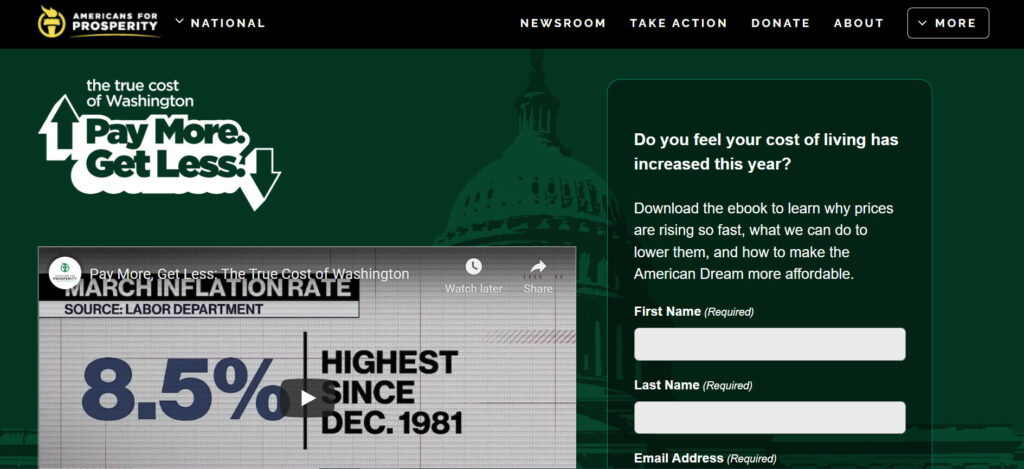
There is a rising need for increased flexible work arrangements that would allow employees and businesses to build mutually beneficial relationships.
The evidence?
The benefits of flexible work arrangements would help employee and employer alike navigate shifting preferences and economic demands.
Amidst rising inflation, continued supply chain disruptions, and a third year of adjustments after COVID-19 entered our lives, Americans have increasingly valued flexibility to work remotely, control work hours, and pursue self-employment to meet career goals and balance their life schedules.
Americans for Prosperity supports a long-term agenda that would make these preferences a more readily-available reality and move our 21st century economy forward.
Introduced by Senator Mike Lee (S. 247 and Representative Mary Miller (H.R. 1980), the Working Families Flexibility Act is one simple but effective way to greatly increase flexibility for traditional private sector employees by providing them new choices when working overtime.
The Working Families Flexibility Act would amend the Fair Labor Standards Amendments of 1966 to provide workers and businesses with flexibility around overtime work.
Instead of current federal law requiring hourly employees to receive 1.5 times their normal pay for each hour worked over 40 hours in a week, the Working Families Flexibility Act would allow employers to offer workers the choice of this traditional 1.5 times pay OR to alternately accumulate paid leave of 1.5 hours for each hour of overtime worked.
In other words, workers who value increased time off to meet family needs or even take a vacation in lieu of extra pay will no longer be blocked by federal law from pursuing this flexible paid leave option with their employers.
Furthermore, the Working Families Flexibility Act ensures that unused accumulated leave is converted to compensation so that businesses meet their obligations and workers are not left without pay for their overtime work should their desire to take time off diminish.
Interestingly, while federal law blocks the private sector from pursuing this option, federal government employees have long enjoyed this privilege, which was allowed in 1978 and became official policy in 1982.
In 2020, the Bureau of Labor Statistics (BLS) estimated that over 73 million workers in the U.S. were hourly wage earners, making most eligible for overtime pay.
While overtime varies significantly from one worker to business to industry, workers in some industries like manufacturing have collectively averaged between 2 to 5 hours of overtime each week for decades.
A 2019 survey indicated that 21 percent of workers in restaurants, 30 percent in retail, 50 percent in construction, 54 percent in transportation, and 30 percent in health care earned overtime at some point over the previous year, providing an indicator of how many people would be impacted by more choice.
With the Working Families Flexibility Act, and legislation like the Employee Rights Act that includes this bill along with other provisions (including the Modern Worker Empowerment Act), employees across all industries would enjoy heightened levels of flexibility.
They’d be able to choose time off instead of only higher pay for the extra work they put in — an attractive option for both workers and businesses to maximize worker fulfillment and meet shifting consumer demands from one week to the next.

Learn more about the solutions that would give working families the flexibility they need to prosper amid the high cost of living in 2022.
© 2026 AMERICANS FOR PROSPERITY. ALL RIGHTS RESERVED. | PRIVACY POLICY
Receive email alerts to learn how to get involved